 "ttyymmnn" (ttyymmnn)
"ttyymmnn" (ttyymmnn)
07/19/2019 at 12:35 • Filed to: wingspan, Planelopnik, TDIAH
 6
6
 15
15
 "ttyymmnn" (ttyymmnn)
"ttyymmnn" (ttyymmnn)
07/19/2019 at 12:35 • Filed to: wingspan, Planelopnik, TDIAH |  6 6
|  15 15 |
!!! UNKNOWN CONTENT TYPE !!!
Welcome to
This Date in Aviation History
, getting of you caught up on milestones, important historical events and people in aviation from July 17 through July 19.
!!! UNKNOWN CONTENT TYPE !!!

(US Air Force)
July 17, 1989 – The first flight of the Northrop Grumman B-2 Spirit. Though the B-2 looks like something from the pages of science fiction, the flying wing is nothing new. Experiments with flying wing designs began as far back as 1910, and American !!!error: Indecipherable SUB-paragraph formatting!!! began experimenting with long-range flying wing bombers during WWII, first with the !!!error: Indecipherable SUB-paragraph formatting!!! , which took its maiden flight in 1946, and then with the jet-powered !!!error: Indecipherable SUB-paragraph formatting!!! the following year. Though the flying wing idea, which sought to remove the drag produced by the fuselage of a traditional aircraft, failed to catch on at the time—or was killed for political reasons—it was not forgotten.
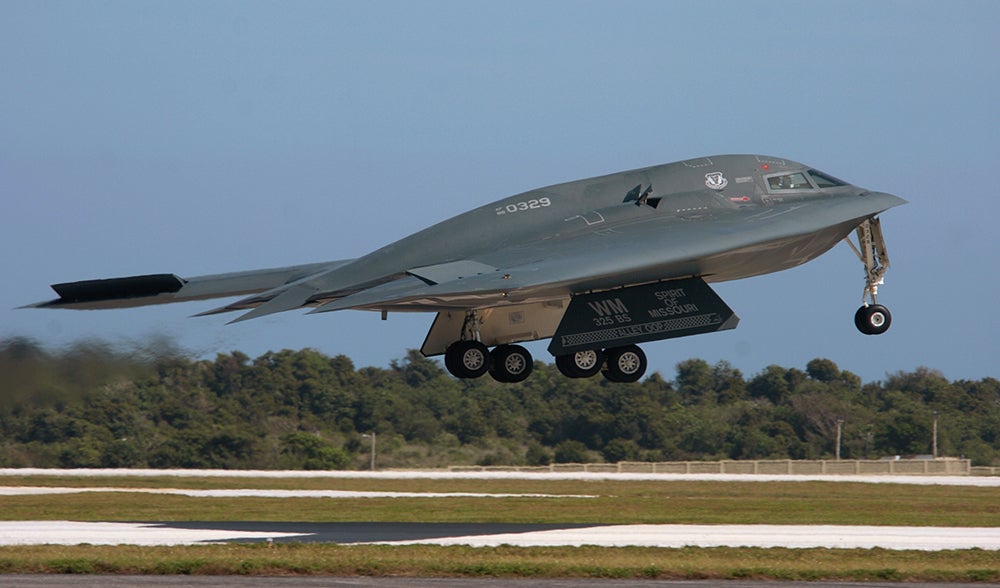
The B-2 Spirit of Missouri from the 509th Bomb Wing at Whiteman Air Force Base, Missouri takes off from Andersen Air Force Base in Guam. (US Air Force)
In 1979, the US Air Force initiated the
!!!error: Indecipherable SUB-paragraph formatting!!!
(ATB) program to find a replacement for the venerable
!!!error: Indecipherable SUB-paragraph formatting!!!
. The new bomber would also take advantages of advances in
!!!error: Indecipherable SUB-paragraph formatting!!!
which, while not making the aircraft invisible to radar, would make it practically undistinguishable from other radar clutter. The original concepts of stealth technology had been developed by Lockheed, and they proved the viability of an “invisible” aircraft with the super-secret
!!!error: Indecipherable SUB-paragraph formatting!!!
program. They followed that with the successful development of the
!!!error: Indecipherable SUB-paragraph formatting!!!
, which first flew in 1981. Stealth had become a reality, and it would become an integral element of any future bomber or fighter development program.

The Northrop Tacit Blue technology demonstrator, which one Northrop engineer called “arguably the most unstable aircraft man had ever flown.” (US Air Force)
As the ATB program progressed, the Air Force took proposals from defense contractors for the new bomber and narrowed their selection down to proposals from Northrop/Boeing, codenamed “Senior Ice,” and a team from Lockheed/Rockwell, whose project was codenamed “Senior Peg.” Both groups suggested a flying wing design and, in October 1981, the Air Force selected Northrop’s entry. Unlike the flat, faceted shapes of the earlier Have Blue and F-117 designs, advances in computer-aided design in the 1980s now allowed for similar radar deflection capabilities with a curved surface, called continuous curvature. This concept was first tested on Northrop’s !!!error: Indecipherable SUB-paragraph formatting!!! aircraft, which itself looked like something a science fiction author would have dreamt up.
When the stealthy B-2 arrived, the sharp angles and flat panels of the F-117 were replaced by a gracefully rounded fuselage centered in a wing swept at 34.74 degrees. And, at 172 feet, the B-2's wingspan matches that of the earlier Northrop flying wings. Four !!!error: Indecipherable SUB-paragraph formatting!!! turbofans buried deep inside the fuselage give the Spirit a maximum speed of Mach 0.95, and the B-2 can carry an estimated 50,000 pounds of nuclear or conventional weapons inside two internal bomb bays. The !!!error: Indecipherable SUB-paragraph formatting!!! (RCS) of the Spirit is just 1.1 square feet for an aircraft with a wing area of over 5,000 square feet. By 1989, it is estimated that the US had spent $23 billion developing the new bomber.
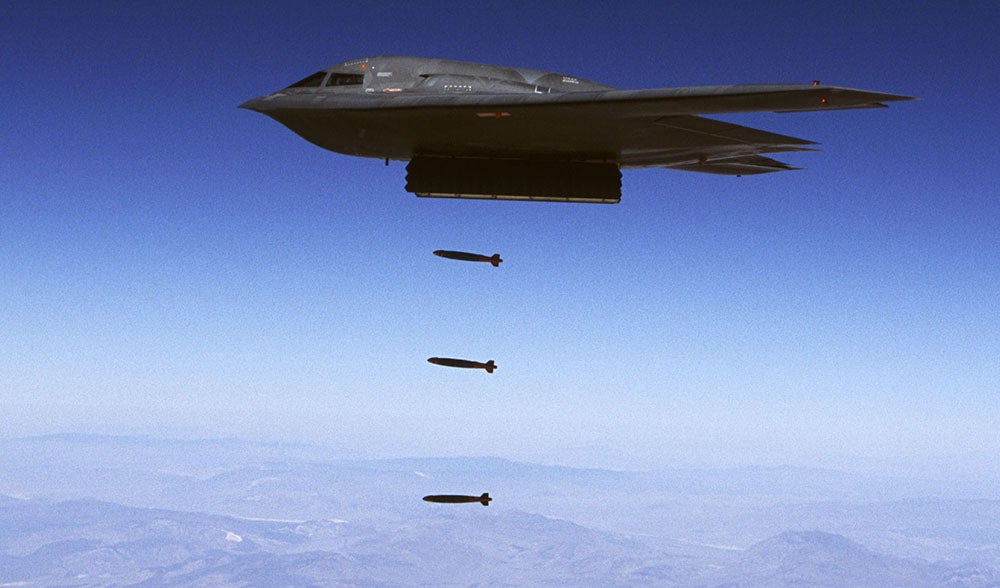
A B-2 drops JDAM bombs during a test at the Utah Testing and Training Range. (US Air Force)
Though the B-2 was originally conceived as a deep penetration bomber, meant to fly undetected into the Soviet Union to deploy nuclear weapons, the Spirit saw its first action in 1999 as part of !!!error: Indecipherable SUB-paragraph formatting!!! in the former Yugoslavia and became the first US warplane to deploy the !!!error: Indecipherable SUB-paragraph formatting!!! satellite-guided bomb. B-2s saw additional action in !!!error: Indecipherable SUB-paragraph formatting!!! and Afghanistan and, during !!!error: Indecipherable SUB-paragraph formatting!!! , B-2s flew from Whiteman AFB in Missouri to bomb targets in Afghanistan, a 40 hour flight with aerial refueling. The B-2 has also flown missions against !!!error: Indecipherable SUB-paragraph formatting!!! militants in Libya and Syria. A total of 21 Spirits have been built since they entered service in 1997 (one was lost to a crash in 2008), but the Air Force plans to retire them by 2032 to make way for their replacement by the !!!error: Indecipherable SUB-paragraph formatting!!! .
!!! UNKNOWN CONTENT TYPE !!!
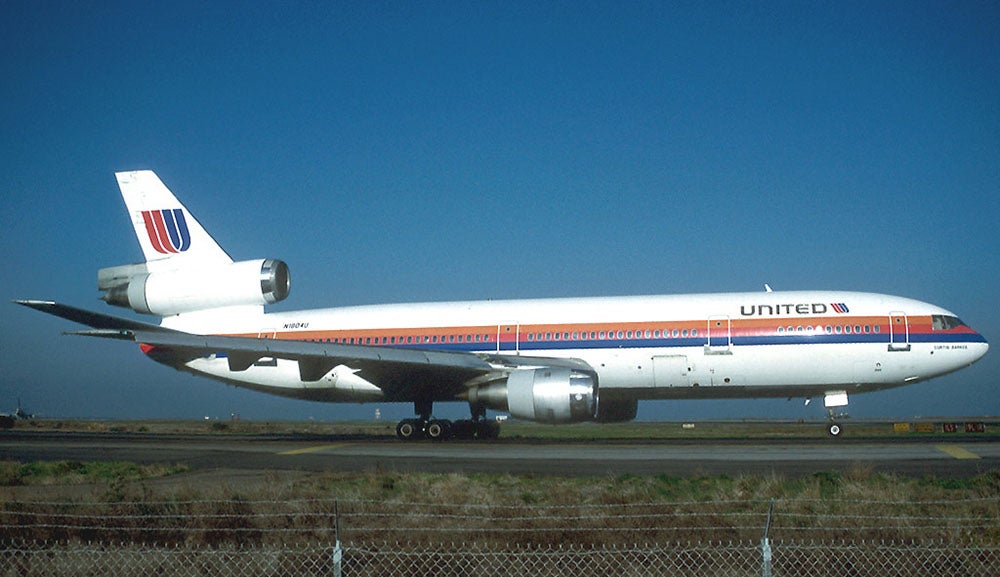 !!!CAPTION ERROR: MAY BE MULTI-LINE OR CONTAIN LINK!!!
!!!CAPTION ERROR: MAY BE MULTI-LINE OR CONTAIN LINK!!!
July 19, 1989 – United Airlines Flight 232 suffers complete hydraulic failure over Iowa following an uncontained engine failure. Statistically, commercial aviation is one of the safest forms of transportation in the world. Considering the number of flights every day the world over, and the number of passengers carried, fatal accidents are exceedingly rare, a safety record made possible by rigorous maintenance and highly trained crews. But aircraft crews operate best when they work together, and one of the most important advances in aviation safety came with the adoption of !!!error: Indecipherable SUB-paragraph formatting!!! (CRM) which arose out of two significant accidents: The !!!error: Indecipherable SUB-paragraph formatting!!! in 1977, and the crash of !!!error: Indecipherable SUB-paragraph formatting!!! in 1978. In the first, two fully-loaded !!!error: Indecipherable SUB-paragraph formatting!!! collided on a foggy runway when the captain of one airliner refused to listen to the tower, or to his co-pilot who questioned whether the runway was clear. In the second, the cockpit crew became so engrossed with solving a problem with the landing gear indicator that they failed to monitor their fuel levels. The plane simply ran out of fuel and crashed seven miles short of the airport. Had both these crews been able to work together more effectively, delegating tasks, focusing on communication, and simply flying the plane, the crashes may not have happened. United Airlines was the first major airline to institute CRM in 1981, and it paid off brilliantly just eight years later at Sioux City, Iowa.
!!!error: Indecipherable SUB-paragraph formatting!!! was regularly scheduled !!!error: Indecipherable SUB-paragraph formatting!!! (N1819U) service from Denver International Airport to Chicago O’Hare. The sequence of events leading to the crash landing in Iowa began as the airliner was cruising at 37,000 feet when the fan disk on the tail-mounted !!!error: Indecipherable SUB-paragraph formatting!!! turbofan engine failed. Pieces of the broken disk ruptured all three hydraulic lines on the DC-10, leaving the aircraft practically uncontrollable. As Captain !!!error: Indecipherable SUB-paragraph formatting!!! and first officer William Records stuggled to control the aircraft, they were joined in the cockpit by Training Check Airman Captain !!!error: Indecipherable SUB-paragraph formatting!!! , a passenger on the flight. The crew discovered that they could gain a measure of control over the plane by using alternating thrust of the two operable wing engines to steer, and they could change altitude by adjusting the thrust of both engines together. Working as a team, Haynes and Records focused on trying to fly the plane and communicate with air traffic controllers, while Fitch worked the throttles. After considering their options, they decided to attempt an emergency landing at Sioux City, Iowa.
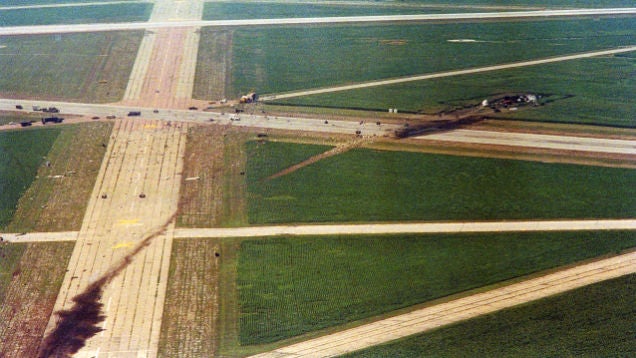
An aerial photo of the crash landing site. (AP)
Without control of the flaps and slats, the pilots were unable to slow their rate of descent, nor could they !!!error: Indecipherable SUB-paragraph formatting!!! the airliner for landing or slow it down to a safe landing speed. As the DC-10 descend toward Sioux City, the airliner was going 252 mph and dropping at 1,850 feet per minute instead of the prescribed 161 mph and 300 feet per minute. The DC-10 struck the runway hard and fast, but only slightly off center. The airliner cartwheeled down the runway, with portions of the fuselage ending up in a nearby cornfield. Despite the crash landing and fire, 185 of the 296 passengers and crew survived. The flight deck crew, badly injured yet still alive, was heralded as heroes, and their teamwork was held up as a shining example of CRM. The failure of the fan disk was found to have been caused by improper manufacturing processes and a failure to identify cracks in the blades during routine maintenance. As a result, maintenance and manufacturing procedures were changed to prevent future accidents, and changes to the hydraulic system were implemented to ensure that complete loss of hydraulic pressure would not happen in the future.
!!! UNKNOWN CONTENT TYPE !!!
Short Takeoff
!!! UNKNOWN CONTENT TYPE !!!
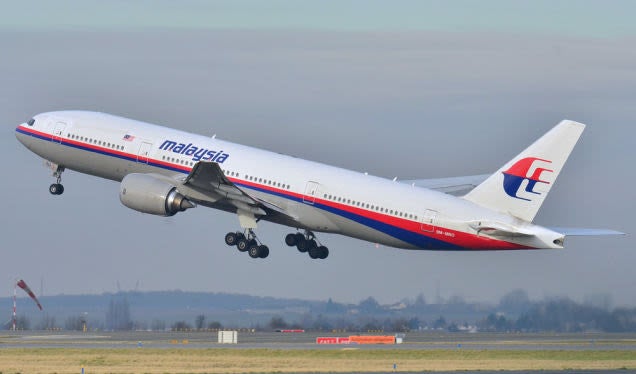 !!!CAPTION ERROR: MAY BE MULTI-LINE OR CONTAIN LINK!!!
!!!CAPTION ERROR: MAY BE MULTI-LINE OR CONTAIN LINK!!!
July 17, 2014 – Malaysia Airlines Flight 17 is shot down over eastern Ukraine.
Just four months after the unexplained disappearance of
!!!error: Indecipherable SUB-paragraph formatting!!!
over the southern Indian Ocean, Malaysian Airlines was again hit with tragedy when a
!!!error: Indecipherable SUB-paragraph formatting!!!
(9M-MRO) was shot down by an antiaircraft missile over war-torn eastern Ukraine, killing all 298 passengers and crew. Much argument and acrimony remains over who is responsible for firing the Russian-made
!!!error: Indecipherable SUB-paragraph formatting!!!
missile. The Ukrainian government blames separatists backed by Russia, while the separatists blame the Ukranian government. Both sides in the ongoing conflict have the weapons necessary to bring down an aircraft cruising at 33,000 feet. Despite an investigation by the Dutch government, it may never be ascertained who fired the missile that destroyed the airliner, though an international team of investigators have
!!!error: Indecipherable SUB-paragraph formatting!!!
the finger firmly at Russian forces operating in the area, and four suspects were
!!!error: Indecipherable SUB-paragraph formatting!!!
in June 2019, with three of them having direct ties to Russian intelligence or security services.
!!! UNKNOWN CONTENT TYPE !!!
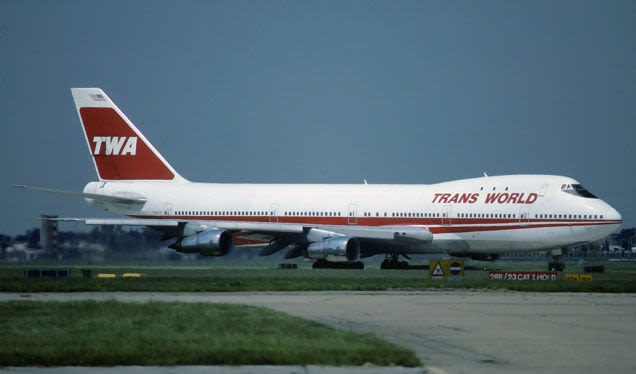 !!!CAPTION ERROR: MAY BE MULTI-LINE OR CONTAIN LINK!!!
!!!CAPTION ERROR: MAY BE MULTI-LINE OR CONTAIN LINK!!!
July 17, 1996 – A midair explosion destroys TWA Flight 800. TWA 800, a !!!error: Indecipherable SUB-paragraph formatting!!! (N91339), was a regularly scheduled flight from New York to Rome that exploded in midair shortly after takeoff from John F. Kennedy Airport, killing all 230 passengers and crew. No distress call was made prior to the explosion, and cockpit conversations appeared to be normal, except that just before the explosion the captain remarked about a “crazy fuel flow indicator.” In one of the most exhaustive investigations ever carried out, as much debris as could be found was brought to the surface and assembled in a hangar in Calverton, NY. After a four-year investigation, the final !!!error: Indecipherable SUB-paragraph formatting!!! pointed to the likely cause being the explosion of a fuel/air mixture in the center fuel tank that was ignited by an undetermined short circuit. Despite this explanation, conspiracy theories abound to this day, one of the most persistent being that the airliner was shot down by a missile fired either by the US Navy or by terrorists in a boat or on shore. However, evidence for these theories remains circumstantial.
!!! UNKNOWN CONTENT TYPE !!!
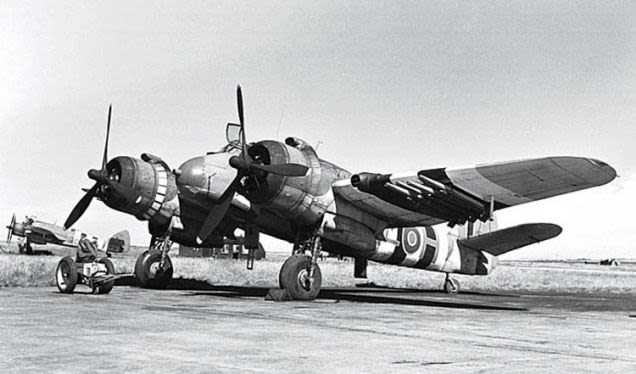
(Canadian Forces)
July 17, 1939 – The first flight of the Bristol Beaufighter,
a multi-role fighter-bomber designed during WWII as a development of the
!!!error: Indecipherable SUB-paragraph formatting!!!
torpedo bomber. Originally conceived as a heavy fighter, the Beaufighter was subsequently developed into a night fighter and maritime strike and ground attack aircraft. Entering service at almost the same time as the first airborne radar sets, the Beaufighter’s large nose was large enough to accommodate the bulky radar sets of the time, and its heavy armament of four 20 mm cannons made it ideal to defend against German bombers. The Beaufighter also served RAF Coastal Command and in the Pacific, and flew as late as 1948 for the Israeli Air Force. Nearly 6,000 Beaufighters were produced from 1940-1946.
!!! UNKNOWN CONTENT TYPE !!!
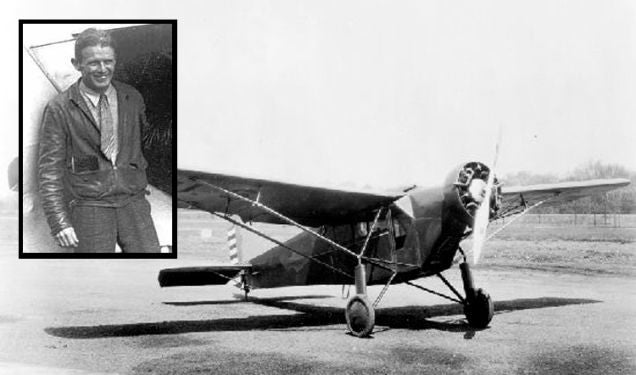
(US Air Force)
July 17, 1938 – Douglas “Wrong Way” Corrigan departs from Floyd Bennett Field and flies to Ireland. Corrigan worked as an aircraft constructor in San Diego before taking up flying and, inspired by !!!error: Indecipherable SUB-paragraph formatting!!! solo crossing of the Atlantic Ocean 1937, he decided to emulate the feat, though he failed to get permission for the attempt. After filing a flight plan for California, Corrigan took off westward from Floyd Bennett Field in New York and then turned his !!!error: Indecipherable SUB-paragraph formatting!!! monoplane east and flew to Ireland. After landing in Ireland, Corrigan claimed that a navigational error led to his wrong-way flight, but his plane was found to be modified to carry extra fuel for the journey. Corrigan never admitted that his mistake was intentional, and he and his plane returned to the US on the steamship !!!error: Indecipherable SUB-paragraph formatting!!! .
!!! UNKNOWN CONTENT TYPE !!!
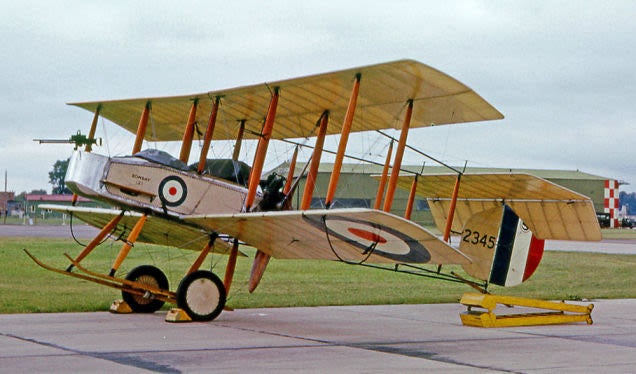 !!!CAPTION ERROR: MAY BE MULTI-LINE OR CONTAIN LINK!!!
!!!CAPTION ERROR: MAY BE MULTI-LINE OR CONTAIN LINK!!!
July 17, 1914 – The first flight of the Vickers F.B.5,
a two-seat pusher biplane and the first purpose-built fighter plane ever produced. Known familiarly as the Gunbus, the F.B.5 was powered by a single
!!!error: Indecipherable SUB-paragraph formatting!!!
9-cylinder engine which gave it a top speed of 70 mph and was armed with a single 7.7mm
!!!error: Indecipherable SUB-paragraph formatting!!!
in the forward observer’s cockpit. The F.B.5 entered service in November 1914 and claimed its first victory over a German
!!!error: Indecipherable SUB-paragraph formatting!!!
monoplane. By 1915, the F.B.5 equipped the world’s first dedicated fighter squadron. The Gunbus was very quickly outclassed by newer German designs, and was retired to serve as a trainer. A total of 224 were built.
!!! UNKNOWN CONTENT TYPE !!!

(US Air Force)
July 18, 2002 – The first flight of the Boeing YAL-1,
a modified
!!!error: Indecipherable SUB-paragraph formatting!!!
that was armed with a megawatt-class
!!!error: Indecipherable SUB-paragraph formatting!!!
(COIL) to test its effectiveness as defense against tactical ballistic missiles. The program to fit a flying laser was initiated in 1996, and the laser, built by Northrop Grumman, was housed in a nose turret constructed by Lockheed Martin. In 2007, the system was test-fired at an airborne target for the first time, with a second successful test in 2010, then a third which destroyed two test missiles. The program was canceled in 2011, and the YAL-1 was flown to
!!!error: Indecipherable SUB-paragraph formatting!!!
in Arizona where it was put in storage before being scrapped in 2014.
!!! UNKNOWN CONTENT TYPE !!!
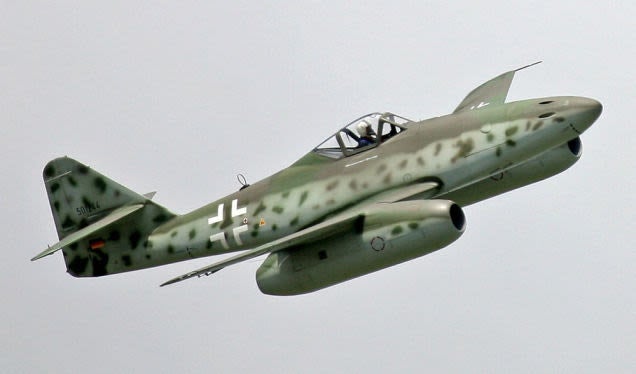 !!!CAPTION ERROR: MAY BE MULTI-LINE OR CONTAIN LINK!!!
!!!CAPTION ERROR: MAY BE MULTI-LINE OR CONTAIN LINK!!!
July 18, 1942 – The first flight of the Messerschmitt Me 262 under jet power.
Though the maiden flight of the Me 262, nicknamed
Schwalbe
(Swallow), had taken place more than a year earlier, delays in development of the
!!!error: Indecipherable SUB-paragraph formatting!!!
axial-flow turbojets meant that the 262's first flight was made using a single
!!!error: Indecipherable SUB-paragraph formatting!!!
piston engine mounted in the nose. The jet-powered Me 262 entered service in July 1942 as the world’s first operational jet fighter, and 262 pilots claimed 542 victories over Allied aircraft by the war’s end. However, difficulties with reliability of the early jet engines, and Allied attacks on Me 262 fuel supplies, hampered the operational capability of the jet fighter, and its impact on the war was negligible.
!!! UNKNOWN CONTENT TYPE !!!
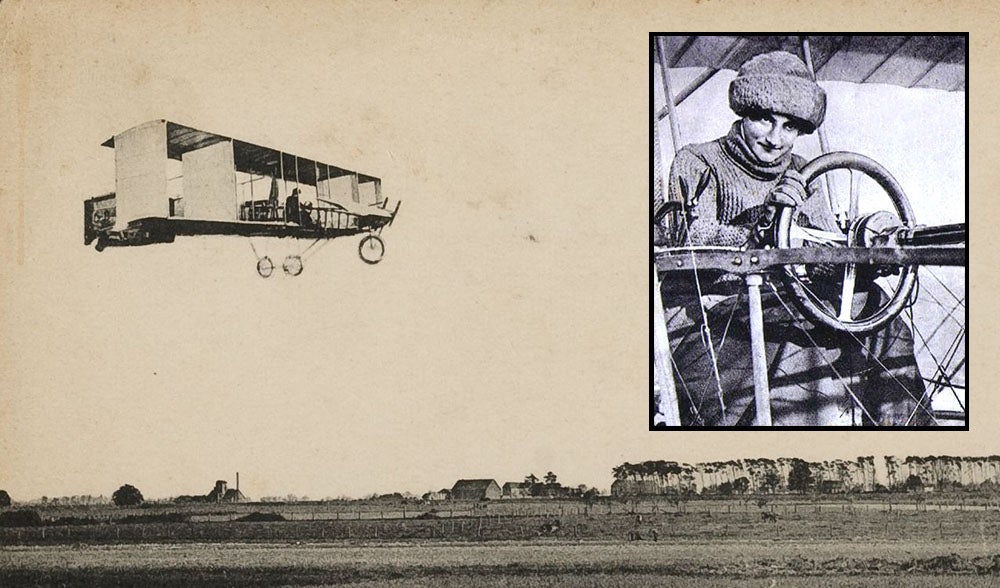
(US Library of Congress)
July 18, 1919 – The death of Raymond de Laroche, the first woman in the world to receive a pilot license. De Laroche (née Deroche) was born in Paris on August 22, 1882 into a working class family, and developed an affinity for cars and motorcycles while also working as an actress. In 1909 she convinced French aviation pioneer !!!error: Indecipherable SUB-paragraph formatting!!! to teach her to fly, and her first flight, and possibly the first by any woman pilot, was necessarily a solo flight since the Voisin aircraft had only one seat. De Laroche received her pilot license on March 8, 1910 and began taking part in aviation expositions as far away as Budapest and Egypt. In 1910 she was almost killed in a crash at Reims, but recovered and returned to flying. In 1913 she won the !!!error: Indecipherable SUB-paragraph formatting!!! for a flight of over four hours, and set two altitude records in 1919. While working to become the world’s first female test pilot, de Laroche was killed, along with her copilot, in the crash of an experimental aircraft.
!!! UNKNOWN CONTENT TYPE !!!
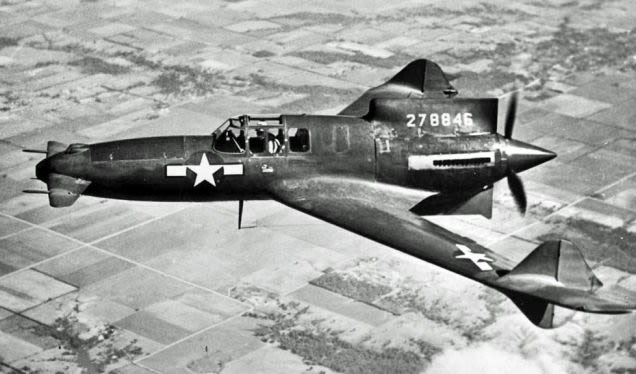
(US Air Force)
July 19, 1943 – The first flight of the Curtiss-Wright XP-55 Ascender. Fearing that American aircraft development was stagnating, the US Army Air Corps hoped to encourage innovative aircraft designs by issuing Request for Data R-40C in 1940. In response, the !!!error: Indecipherable SUB-paragraph formatting!!! proposed the XP-55 Ascender, a swept wing monoplane with a pusher propeller and a forward canard. Three prototypes were built, but testing showed that the airplane displayed poor stall characteristics, and the first prototype was lost to a crash. The third prototype of the Ascender (known derogatorily as the “ass ender”) saw further improvements to the wing, but this prototype was also lost to a crash that killed the pilot and as many as four civilians on the ground. Ultimately, the Ascender’s performance was found to be inferior to conventional fighters, and advances in jet fighters led to the XP-55’s cancellation.
!!! UNKNOWN CONTENT TYPE !!!
!!! UNKNOWN CONTENT TYPE !!!
!!! UNKNOWN CONTENT TYPE !!!
!!! UNKNOWN CONTENT TYPE !!!
Connecting Flights
!!! UNKNOWN CONTENT TYPE !!!
!!! UNKNOWN CONTENT TYPE !!!
!!! UNKNOWN CONTENT TYPE !!!
!!! UNKNOWN CONTENT TYPE !!!
!!! UNKNOWN CONTENT TYPE !!!
If you enjoy these Aviation History posts, please let me know in the comments. And if you missed any of the past articles, you can find them all at
!!!error: Indecipherable SUB-paragraph formatting!!!
. You can also find more stories about aviation, aviators and airplane oddities at
!!!error: Indecipherable SUB-paragraph formatting!!!
.
!!! UNKNOWN CONTENT TYPE !!!
 someassemblyrequired
> ttyymmnn
someassemblyrequired
> ttyymmnn
07/19/2019 at 12:44 |
|
Have you seen the Denny Fitch interview that’s floating around - it’s well worth checking out:
 ttyymmnn
> someassemblyrequired
ttyymmnn
> someassemblyrequired
07/19/2019 at 12:53 |
|
I have not. Thanks.
 Highlander-Datsuns are Forever
> ttyymmnn
Highlander-Datsuns are Forever
> ttyymmnn
07/19/2019 at 13:06 |
|
The first commercial airliner I flew in was a 727. They had a lot of room in the cabin and my dad could smoke.
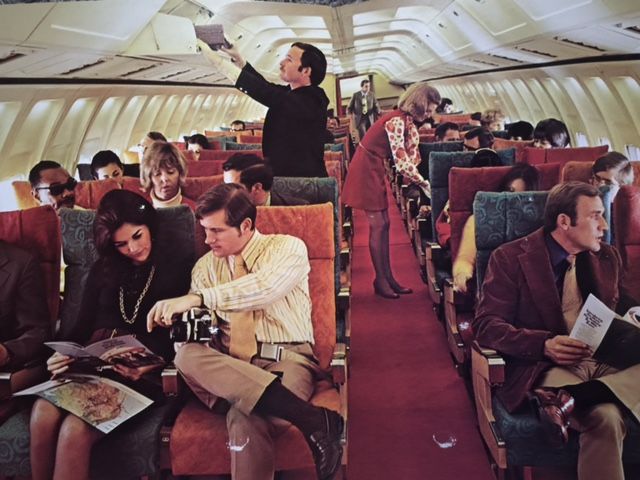
 ttyymmnn
> Highlander-Datsuns are Forever
ttyymmnn
> Highlander-Datsuns are Forever
07/19/2019 at 13:38 |
|
My brother and I flew a lot when we were kids as unaccompanied minors since our parents were divorced. One time they let us into the cockpit and the crew let us push up the throttles when we pushed back. Those were the days.
 Highlander-Datsuns are Forever
> ttyymmnn
Highlander-Datsuns are Forever
> ttyymmnn
07/19/2019 at 14:17 |
|
I recall getting a cock pit tour before push back as well. I didn’t get to touch any of the controls but that first flight on a real jet was a top 10 experience of my childhood.
 ttyymmnn
> Highlander-Datsuns are Forever
ttyymmnn
> Highlander-Datsuns are Forever
07/19/2019 at 14:25 |
|
They are pretty rare these days, to be sure. Last time my kids got a peek at the cockpit was on a Southwest flight. Pilots were awesome. They let them inside, then the captain showed them the “machine guns” by activating the stick shaker. Good times.
 Y2K996Cab
> ttyymmnn
Y2K996Cab
> ttyymmnn
07/19/2019 at 19:28 |
|
On the UA232 article you mention UA173 crashed in the Florida Everglades but I believe they crashed outside Portland. Eastern Airlines 401 crashed in the Everglades due to an autopilot disconnect while working on a similar gear light problem. Look forward to these articles every three days and appreciate the effort it requires.
 ttyymmnn
> Y2K996Cab
ttyymmnn
> Y2K996Cab
07/19/2019 at 23:35 |
|
You are absolutely right, and I must have gotten those two confabulated somehow. Thanks for pointing that out. I will correct it.
And thank you for the kind words. Thanks for pointing that out.
Cheers.
 TheRealBicycleBuck
> ttyymmnn
TheRealBicycleBuck
> ttyymmnn
07/19/2019 at 23:43 |
|
Great post. Long day for me. I’m too tired to make a reasonable comment.
 ttyymmnn
> TheRealBicycleBuck
ttyymmnn
> TheRealBicycleBuck
07/19/2019 at 23:47 |
|
No worries. Thanks for reading.
 Hamtractor
> ttyymmnn
Hamtractor
> ttyymmnn
07/23/2019 at 14:15 |
|
I love the Allied WWII-era twin-engine fighters. The Beaufighter, and the Mos quito were just so cool. The Tigercat was probably one of the all-time sexiest fighters ever to fly too... Still hard to figure out why the Germans couldn’t make a sexy twin-engine job, they put out some hideous planes, lol... Take the Me262 out of the equation and they were bottom of the barrel on sexiness. I don’t get how the same guys who made the FW190 couldn’t stay sexy...
 ttyymmnn
> Hamtractor
ttyymmnn
> Hamtractor
07/23/2019 at 14:41 |
|
Well, it wasn’t all beauty pageant winners in the US. T he Bell Airacuda might take the cake for the most batshit crazy ideas.

It would have been interesting if they had gone ahead with production of the Beech Grizzly. Like the A-10, it was a plane built around a gun. In this case, a 75mm cannon.
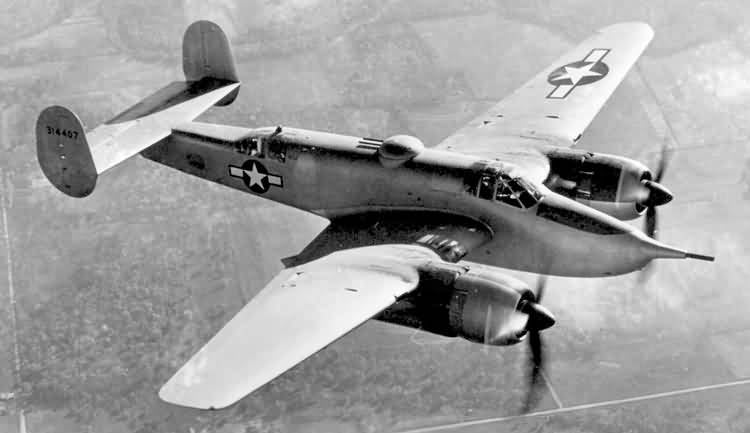
 Hamtractor
> ttyymmnn
Hamtractor
> ttyymmnn
07/23/2019 at 14:58 |
|
The Airacuda was a least a fun idea... But the Krauts put more ugly planes into full production during WWII than the US did in all of the years since, and most of them sucked. Take the FW-190, Me-109, the Stuka and the Me262 out of the picture, and my highly valuable, unbesmirchable opinion is that the Nazi’s put more effort into the aesthetics of their snappy uniforms than they did their planes...
 ttyymmnn
> Hamtractor
ttyymmnn
> Hamtractor
07/23/2019 at 15:04 |
|
I’m not sure Hitler ever really got his head around the role of the aircraft, and Goring was simply incompetent. If they hadn’t driven Udet to suicide, they might have been better off. They might have been on to something with the S chnellbomber concept in 1937, but it never progressed much from there. It took the Allies to make a truly effective fast twin, or at least a really rugged one.
 Hamtractor
> ttyymmnn
Hamtractor
> ttyymmnn
07/23/2019 at 15:15 |
|
I think maybe Hitler, having been an infantryman, was stuck on CAS-type stuff, he LOVED the Stuka. Seems like he was so focused on making everything a bomber...